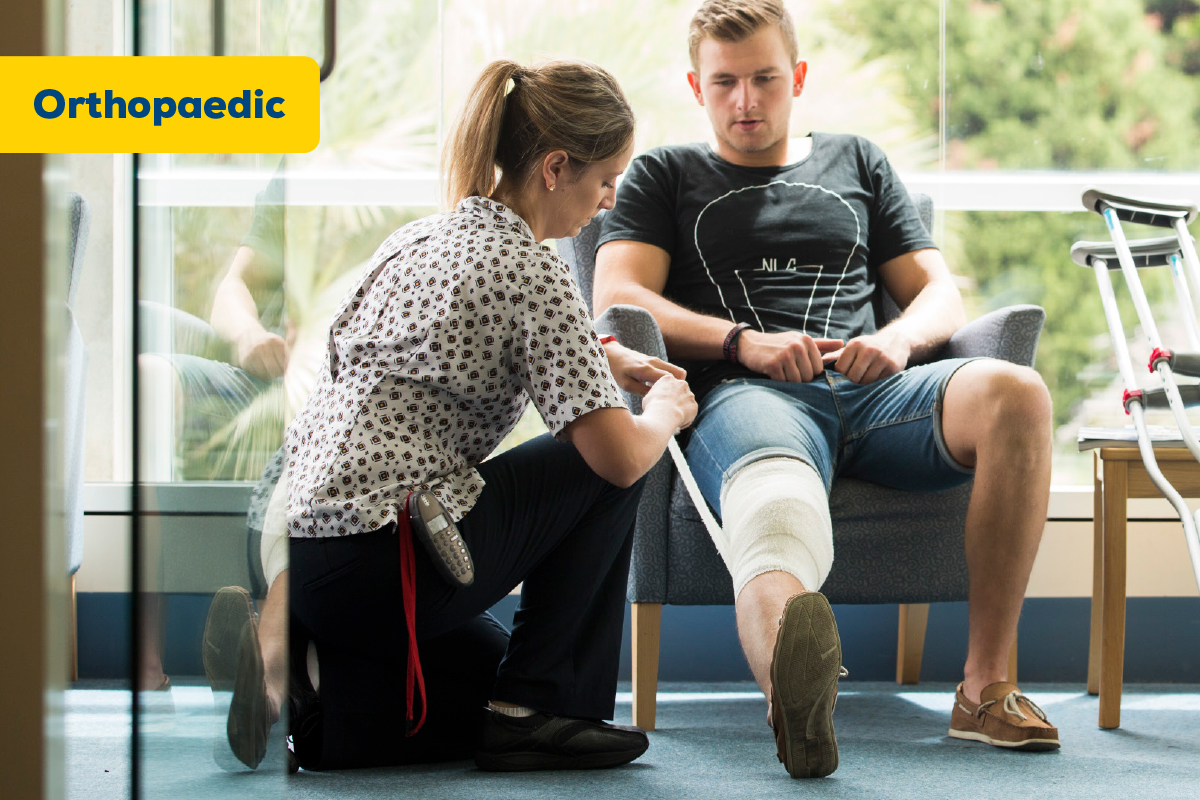Looking after your knees
1 March 2022

Day after day, year after year, our knees can really take a battering. Obviously, we need them to stand, kneel, jump, walk and steady ourselves, but if you’ve ever damaged your knee you’ll also know how much we rely on their stability just to sit and lie down comfortably. And while many of us will take an interest when our favourite sportspeople suffer debilitating knee injuries, we often take our own joints for granted, until it’s too late.
The knee joint is a pretty complex system of bones, muscles, cartilage, tendons and ligaments, all of which need to work in harmony, and there are some simple things we can do to help keep our vital ‘leg hinges’ happy and in good nick.
Stay active
Movement is really important for maintaining good knee health, as it helps keep the muscles strong and better able to support the knee throughout its motion. Any activity should be within your normal capabilities, and if you’re trying something new, make sure you start out slowly and gently. Low-impact exercises such as walking, swimming and yoga are great for keeping basic muscle tone.
Higher intensity exercise such as running, and sports that involve quick directional changes can damage the knee if you take them up too quickly, so be gentle and progress gradually.
Work your leg muscles
In addition to just staying active, dedicated exercise to strengthen your leg muscles will help keep your knee strong and stable. The key muscles are your quads and hamstrings (the muscles at the front and back of your thighs), your adductors and abductors on the inside and outside of your thighs, and your calf muscles. A qualified personal trainer can suggest effective weight-bearing exercises as well as a host of exercises that simply use your body weight (e.g. squats and lunges) to strengthen these key muscle groups.
Maintain healthy weight
The knees have to carry almost all your body weight, so if you are on the heavy side, you’re putting your knees under a lot of stress every time you stand up. By keeping your weight down, you take a lot of strain off your knees.
Walk tall
Poor posture often develops as we get older, however it also alters our centre of gravity, putting additional pressure on our knees to keep us stable. Try to walk tall with your shoulders back and your head directly above your hips, as this creates a much more comfortable position for your knees and pelvis. Yoga, Pilates, core exercises, massage and even physio in more extreme cases can help you improve your posture.
Listen to your knees
The body has an amazing way of telling us when something is not right, so if you feel pain or discomfort, heat or swelling in your knee, seek medical advice instead of just taking a painkiller and hoping it will go away. As mentioned, the knee is a pretty complex mechanism and while often, all it needs is rest, it’s vital that we get a problematic joint professionally assessed as soon as possible to avoid any longer-term damage.
At Burnside Hospital, our orthopaedic services offer the latest interventions and treatments to manage a broad range of patients’ orthopaedic conditions. Burnside Hospital has been providing orthopaedic care for over 40 years to the South Australian and broader community.
For more information have a chat to your GP.


